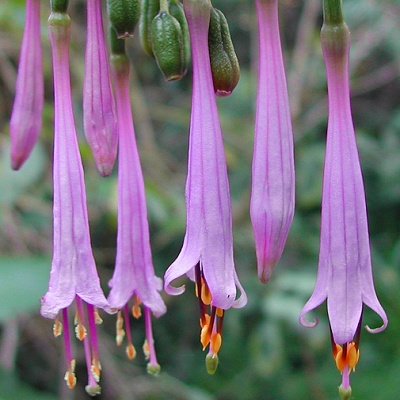| Home |
Strange Wonderful Things Rare and exotic plants |
 |
|---|
Planting the seeds
Plant your seeds promptly for best germination
Getting started -- Use small containers or cups that have drainage holes. For soil, use a well draining soil mix, such as 2 parts potting soil to 1 part perlite or coarse sand.
Fill each container with soil, but don't pack it down - just water it until evenly moist. Place a seed or 2 on top, and sprinkle a thin layer of soil on top - just enough to barely cover the seeds, because light helps the seeds germinate. Sprinkle some water on the top soil layer.
Until the seeds sprout, ensure that the soil surface does not dry out. If you enclose the pots in a plastic dome or bag to maintain moisture, leave it open a crack to allow fresh air in. You may need to drip some water on the soil every day or 2 to keep it moist.
Keep the pots at about 65-75 degrees F (18-24°C). Avoid letting them get above 76°F (24°C). I recommend placing a thermometer near the pots to ensure they are at the right temperature. Keep the pots in a bright spot, but not in direct sun.
The seeds should begin sprouting within 4 weeks, but allow up to 10 weeks for any slow ones to sprout, especially at cooler temperatures. Give your seedlings bright light, but avoid direct sunlight. I recommend growing them indoors the first few months.
Watering - Keep the soil evenly moist - but not soggy. Never let the pots dry out, and don't let them sit in a tray of water.
If your tap water is very high in minerals (or "hard") i recommend using bottled spring water or rain water.
Repotting - When the plants are 2-3 months old, transplant them to a larger container. Use a looser soil mix than you germinated them in. A typical mix is equal parts of potting soil, fine orchid bark, and pumice rock or perlite.
Transplant carefully to avoid letting the soil ball break apart, which can damage the roots. Watering the soil before repotting will help avoid this. For the first week after repotting, give no direct sun.
Feeding - Your Fuchsia has average fertilizing needs. Feed about every 2 months during the growing season with a slow-release fertilizer, like pelleted or organic fertilizer.
It's normal for an older leaf to occasionally turn yellow and drop, but if it seems excessive, your plant may need more nitrogen fertilizer. It can also be from overly dry soil. Keep in mind that the leaves normally drop each winter.
Climate - This Fuchsia enjoys temperatures between 45-75° F (7-24°C). I have no information on how much heat it can take but i suspect it won't thrive if temperatures are consistently above 85 degrees F (29°C), particularly if nights are warm. It probably can survive a few degrees of frost, but i recommend keeping it from freezing, especially if you wish to see the winter flowers.
In warmer areas, give the plants afternoon shade, and don't place them near a wall where heat can collect. Keep the pot shaded to avoid overheating the roots, and mulch heavily to keep the soil moist.
Over about 40% humidity is recommended. If your room's humidity is too low, you may use an ultrasonic room humidifier, which you can get from thrift stores or home improvement stores.
I believe that flowering is triggered by exposing the plant to cool nights in winter, so try to give it a few hours below 60-65° F (16-18°C) each night in winter.
Pruning - After flowering, trim back the longer branches about halfway, to keep the plant from looking leggy.
Pests to watch for - whitefly, aphids, scale (little lumps on the stems or leaves), mealybugs.
If you have any questions, feel free to email me.
Have fun growing them!
Jeff
Strange Wonderful Things
| Home |
Strange Wonderful Things Rare and exotic plants |
|
|---|---|---|
| Entire site Copyright 2003-2023 by Strange Wonderful Things, except as noted | ||

